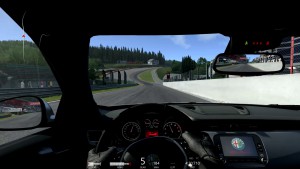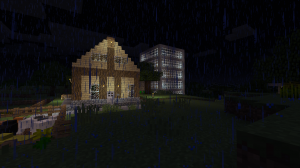Language learning with computer games
During my ongoing literature review I often discover interesting facts about things I’ve never thought about. Sometimes I can connect these facts with my own observations: The result is mostly a completely new idea why things are as they are. Maybe these ideas are new to you, too. Therefore I’ll share my new science based knowledge with you!
This week: This time, I think about how a computer game can educate players in a foreign language.
I briefly discussed the idea of using computer games for the purpose of language learning in Finding of the week #118 [1]. In this article, I like to present a computer game that demonstrates an ideal way to teach a foreign language to computer game players.
The computer game Lifeless Planet [2] puts the player into the role of an astronaut who is stranded on an unknown planet. After a long journey through the vastness of space, the astronaut and his other crew members had a crash landing on the planet which they wanted to explore. After the astronaut regained consciousness, he is sitting alone in the capsule and as he leaves the spacecraft, he finds human footprints leading away from it. In contrast to all the observations made by scientists, the planet is not a lively world. Instead, it is a complete desert and the atmosphere has not enough oxygen to keep the astronaut alive without his space suit. A couple of minutes later, the astronaut discovers a leak in his space suit–the fight for survival has begun.
During the story of game, the astronaut encounters a mysterious woman and starts to follow her as she seems to know how to survive on this hostile planet. Although the astronaut tries everything to speak to her, she always runs away and does not allow him to approach her. The chase continues until the astronaut has to traverse a very dangerous area. Just in the moment as he enters the area, the woman stops him from running into his doom and helps the player to move through this area by giving additional advice.
Aside from giving hand signals, she also shouts commands in order to guide the player through the dangerous area. However, these commands are not in the language the player has selected for the game as the woman only speaks Russian. As a result of this, the player starts to learn some basic commands like „Stop“ and „Go“ in Russian while he plays the game.
This special game mechanic of guiding the player using a foreign language presents an ideal way of introducing learners to a new language. The immersive effect of the game gives those commands a special meaning and thus increases the player’s motivation to listen and to understand what the woman shouts. Additionally, the woman uses hand gestures in order to provide a common ground that helps the player to understand her words. Furthermore, the woman repeats the commands and, as a result of this, the player has the chance to memorize these phrases due to repition.
This game mechanic can easily be enhanced and reused in different contexts in order to expand the language proficiency of the learners. Moreover, the amount of spoken words can be increased over time and thus help the learners to understand the grammar of the language. Additionally, the learning effect can also be enhanced by providing subtitles in order to present the spoken and written word at the exact same time.
In the end, computer games could be an ideal environment for the purpose of language training as they can present the language in a vivid and engaging way.





